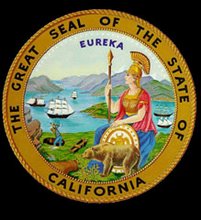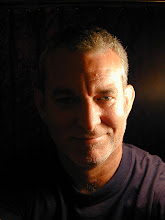Switzer~land?

Yep. Time for hike and campout #2 with Dax’s Boy Scout troop 888. This time to Switzer Falls in the San Gabriels Mountains in Los Angeles. Don’t worry, I’m not going to blog about every campout we go on. But this hike is through another historic location only a few of miles from Mt. Lowe.

The Serpent Patrol: Dax, Brandon, Michael, Ryne, and Phillip.

Apparently, what with the “Ye Alpine Tavern” and Switzer~land, turn of the 20th Century Angelinos were in love with the idea of transforming the Sierra Madres into the Swiss alps.

The Switzer Falls area is set in the deep Arroyo Seco canyon and contains a series of waterfalls cascading over smooth rock into rock pools. In warmer weather some of these falls can be used as water slides. But today the water is snowmelt and is far too cold for us to swim in.

The nearby Mt. Waterman is named after Bob Waterman and his new bride when they took a month long honeymoon camping adventure and discovered the falls in 1883. When they returned they told their friend Commodore Perry Switzer all about it (I don’t know where he gets off calling himself “Commodore”, maybe I should adopt such a title! ). Excited by the news of this paradise, Switzer built a trail and packed in tents, food and kitchen equipment, creating the first tourist resort in these mountains.

Very little remains of the original road, so the boys had to make about a dozen stream crossings, balancing on rocks with full packs! Dax discovered that he has a natural ability for this and did quite well (Do I sound like a proud papa?).

Lloyd Austin and his wife bought Switzer's Camp in 1911 and renamed it Switzer~land. With donations, they built Christs Chapel on a rocky outcrop 200 feet above the upper falls. It looks small, but the Chapel and it's amphitheater could seat some 200 people, and was a popular location for weddings, conferences, retreats, and Sunday morning prayer.

Fighting the urge to yodel, I managed to snap this pic of the Chapel site today- minus the Chapel. Once again, the historic structures had to be dynamited by the U.S. Forestry service for safety concerns. Why can't we hang on to our history?
 Here you can see some of the remains of the arches laying on the hillside. I don't blame the U.S Forestry Service for doing what they had to do. I blame heartless, ignorant folk who think their actions have no consequences! One of the reasons I believe Scouting to be so important.
Here you can see some of the remains of the arches laying on the hillside. I don't blame the U.S Forestry Service for doing what they had to do. I blame heartless, ignorant folk who think their actions have no consequences! One of the reasons I believe Scouting to be so important.
 Switzer's Camp today is still very beautiful, and is very popular for day hikes and camping. The stream in the deep valley is shaded by white barked alders, tall oaks, sycamores and maple trees, keeping everything nice and cool. We set up camp next to the stream, and although it looks placid in this pic, the stream is actually quite lively and we fell asleep that night to it's calming rushing sound echoing off the valley walls.
Switzer's Camp today is still very beautiful, and is very popular for day hikes and camping. The stream in the deep valley is shaded by white barked alders, tall oaks, sycamores and maple trees, keeping everything nice and cool. We set up camp next to the stream, and although it looks placid in this pic, the stream is actually quite lively and we fell asleep that night to it's calming rushing sound echoing off the valley walls.

Assistant Scoutmaster and Troop Chaplin Tim, tries his luck in one of the many rock pools. And yes, he dined on rainbow trout that night for dinner.

Nice effort early Angeleno's! It looks like it was fun while it lasted. But these days, I guess we can just jet to the real Alps. But really, the Sierra Madres are respectable in their own right, they don't need to be the Alps. There is something to be said about this area reverting back to it's natural state. It made for a mighty nice getaway for us, camping in a relatively remote location and getting away from the electronic world (not the slightest cellphone signal could be found). And with everyones care, it should stay this way for the next 100 years. Or else the U.S. Forestry Service will have to Dynamite the whole dang mountain range to smithereens!!!
Okay! Okay! So I'm not a philosopher! Take it as you want.
Signed;
Commander Dav



 Mojave also has a nice collection of vintage aircraft.
Mojave also has a nice collection of vintage aircraft. 








 The road to Randsburg
The road to Randsburg
 While way too lively to be a ghost town,
While way too lively to be a ghost town, 








 There is a whole parking lot with hitching posts for modern day cowboys to hitch their steeds and then mosey over to...
There is a whole parking lot with hitching posts for modern day cowboys to hitch their steeds and then mosey over to...


 No trip to a ghost town is complete without a visit to the the old cemetery.
No trip to a ghost town is complete without a visit to the the old cemetery. There are a lot of forgotten souls at this cemetery. The inscriptions on this marker are long lost. Most graves don't even have a marker anymore and all traces are of there even being a grave there are lost to the elements. Even still, someone took the time to commemorate them by placing a flower at each of the grave sites. Spooky...
There are a lot of forgotten souls at this cemetery. The inscriptions on this marker are long lost. Most graves don't even have a marker anymore and all traces are of there even being a grave there are lost to the elements. Even still, someone took the time to commemorate them by placing a flower at each of the grave sites. Spooky...


